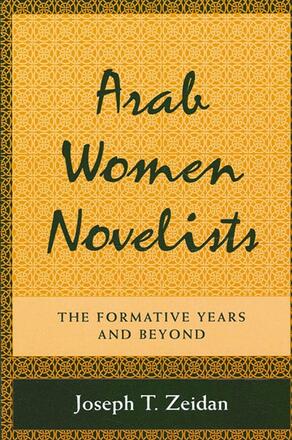
Arab Women Novelists
The Formative Years and Beyond
Alternative formats available from:
Description
This book assesses the contribution of women to the Arabic novel, both in subject matter and form. It begins by tracing the struggle over women's rights in the Arab world, particularly the gradual improvement in women's access to education—the first area in which women made significant gains. Subsequent chapters discuss Arab women writers' remarkable talents and determination to overcome the barriers of a male-dominated culture; survey the 1950s and 1960s, during which women's writing gained momentum and more women writers emerged; and address the shift in emphasis and attitude that women's literature underwent in the late 1960s, especially following the 1967 Arab-Israeli war, when women novelists began to place more stress on international politics.
Zeidan adapts Western-based feminist literary theory to a discussion of Arab women's literature but refrains from imposing that theory inappropriately on literature whose context differs significantly. He compares the women's movements in Arab and Western cultures and the development of women's literature in those cultures, and uses these comparisons to highlight similarities and differences between them as well as to consider how one affected the other. His analysis culminates in the early 1980s—the end of the formative years—when women's writing had become a familiar part of Arabic literature in general and a positive reflection on the collective Arab consciousness.
Joseph T. Zeidan is Assistant Professor of Arabic at The Ohio State University. He is the author of two editions of Bibliography of Women's Literature in the Modern Arab World.
Reviews
"This is an excellent study of Arab women novelists. For the first time in English, it presents a sustained analysis that shows their development over a period of almost one century and relates it cogently to the concurrent sociopolitical change in the Arab world. Written with great sensitivity and understanding and based on solid scholarship and wide reading in several languages, it is a significant contribution to the field of Arabic literature studies as well as to Arab women's studies. " — Issa J. Boullata, McGill University